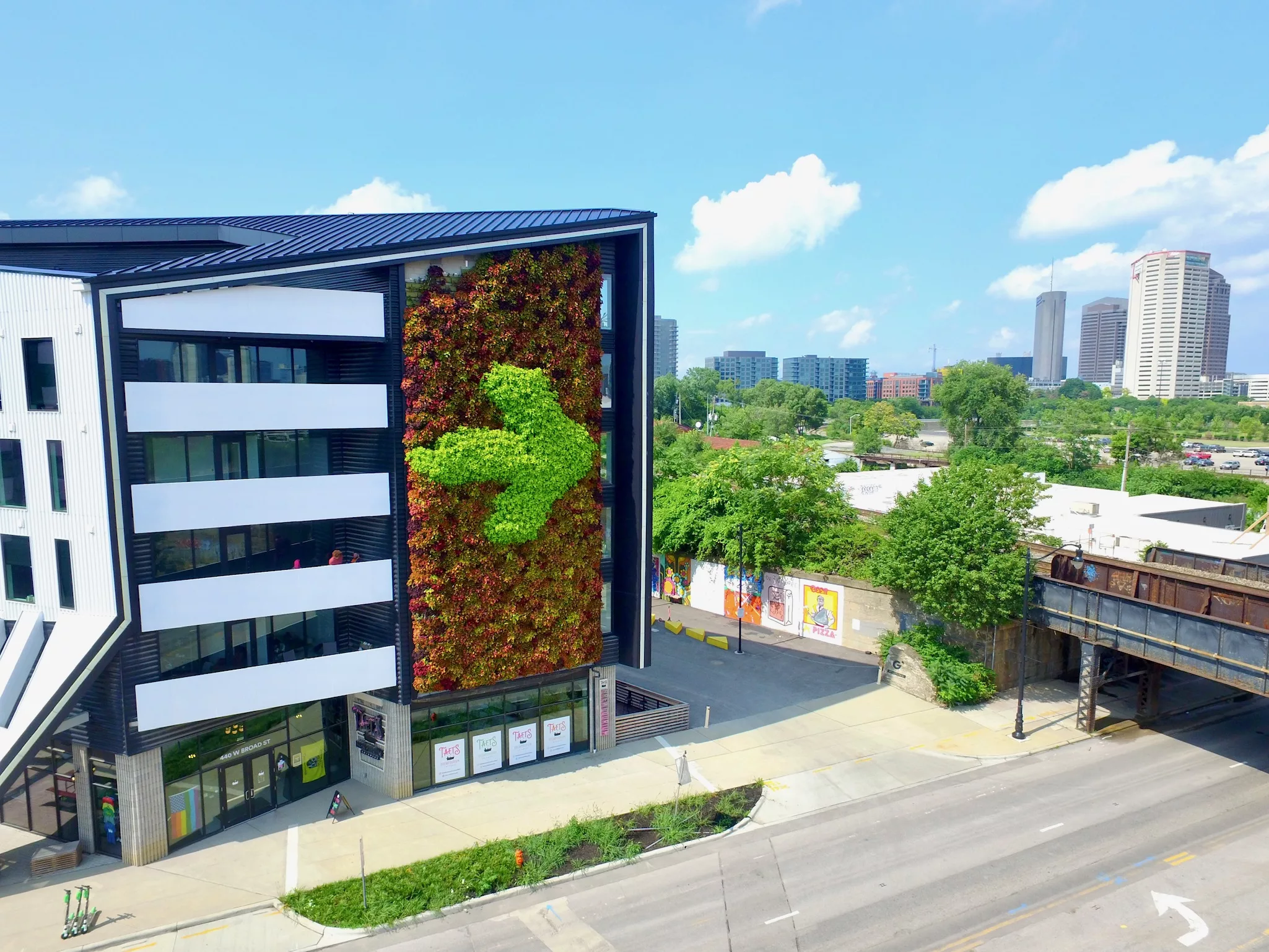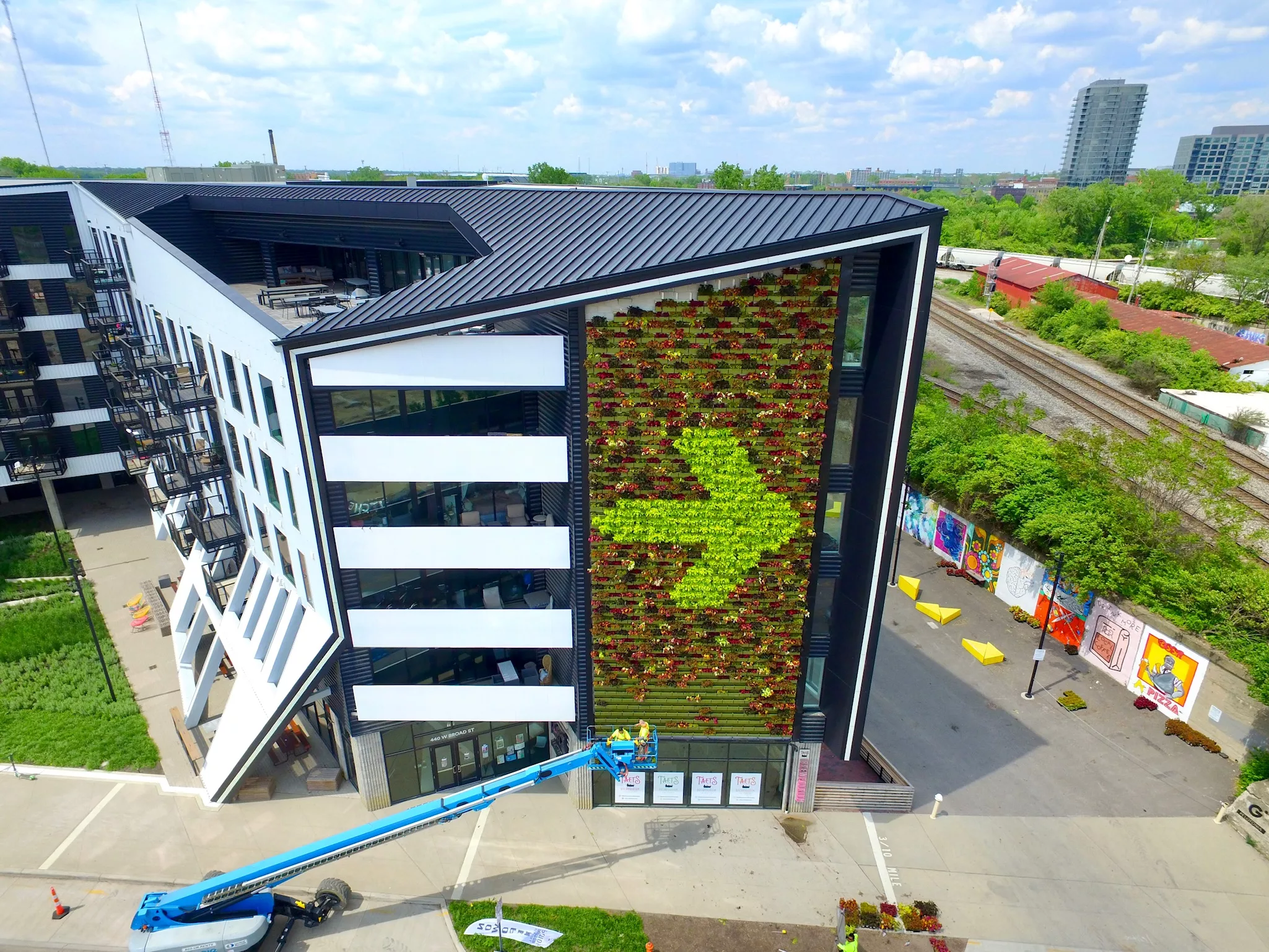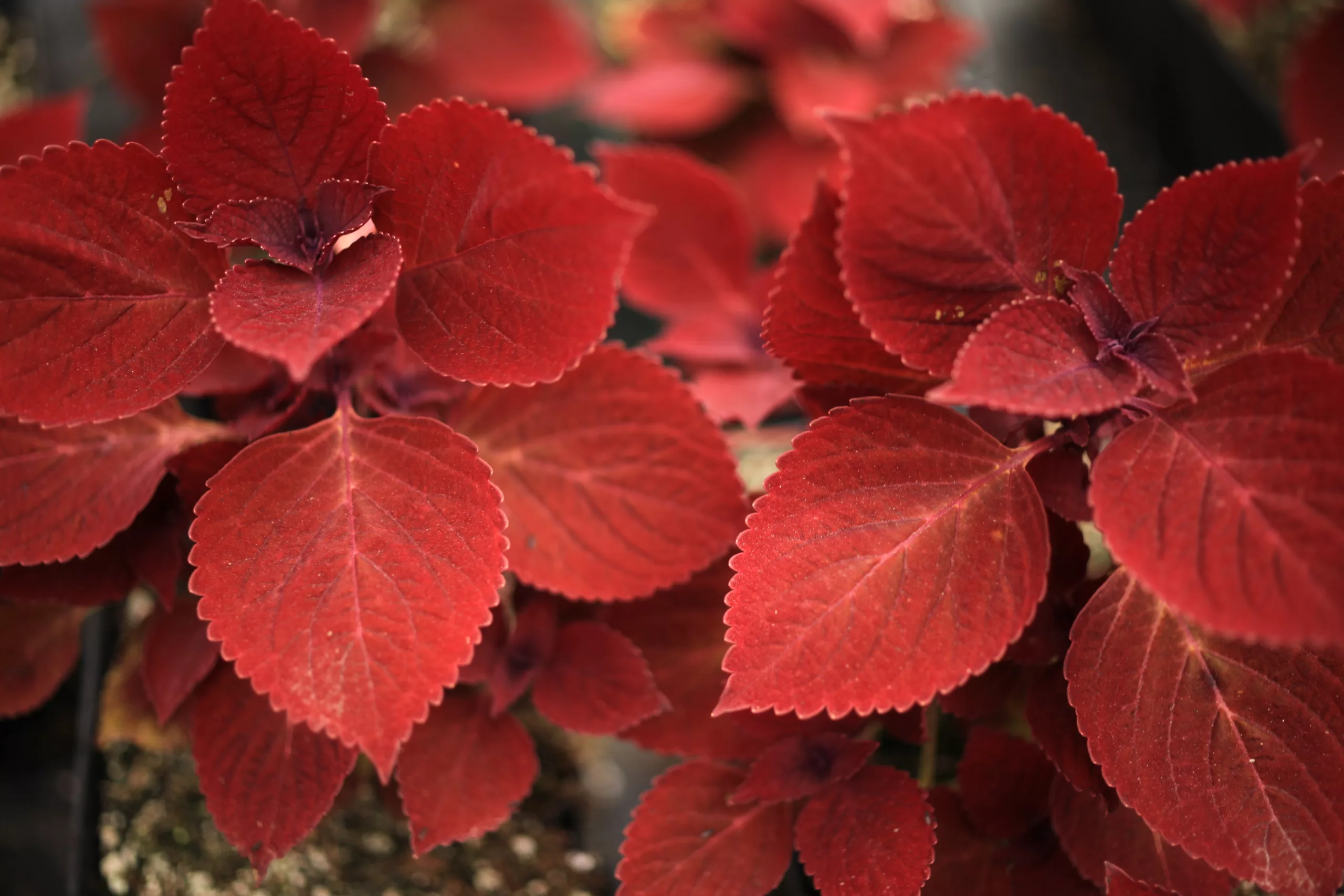
The fully mature living wall on the Gravity One building (Kaufman Development) in Columbus, Ohio.
A mixed-use building in downtown Columbus, Ohio is turning heads with an unusual artistic façade: A wall of colorful plants. Built in 2019, the wall covers 1200 square feet on the side of Gravity One building, where it faces the road with an eye-catching graphic. The bold green arrow represents the Peloton company, and draws the eye to the shop next door. This creative use of living plantings makes a much richer statement instead of a traditional sign.
What is a Living Wall exactly? Simply put, it’s a wall covered with plants. They can be made from fabric pockets, trellis structures, or in this case, hard-sided planter boxes that comprise the LiveWall system. Living walls can provide a variety of aesthetic and functional benefits, such as air purification, living signage and artwork, sound dampening, habitat for small animals, and even as a beautiful backdrop for photos and videos!
Thoughts From the Team
The Gravity One green wall was designed and manufactured by LiveWall, and installed and maintained by Environmental Management Inc. (EMI). John Loos, Director of Landscape Construction at EMI, shared some thoughts on the project. “We get a lot of compliments on the wall – the building owners love it! It’s really cool that we were able to be part of such a visible project.” The EMI team also enjoyed the installation process, “The installers loved the opportunity to go on the lift. It’s not something they get to do every day!”

The installation of the Gravity One living wall in progress.
Plant Varieties Matter
An important point of consideration in living wall design: choosing plant varieties! Using annuals is recommended over perennials in cold winter climates, as they provide the most color with the least maintenance – without having to worry about winter kill. In addition, varieties matter, as certain cultivars are not compatible in a planted wall system as they may not cover effectively. In order to maximize the beauty of a living wall, it is strongly recommended to follow manufacturer directions. The Gravity One project demonstrates that embracing the use of annuals in living wall design can be a lower cost way of providing color and interest, while exercising creativity.

Coleus ‘Ruby Slipper’ – one of the beautiful plant varieties used in the Gravity One project.
Creating Patterns in a Living Wall
When designing a living wall, patterns can easily be created using a grid and color-coding the desired plant varieties (see video for details). Especially on a large-scale installation, virtually any vision can be realized: curvilinear patterns, logos, checkerboards, and more! Because of the planter design, the wall can easily be swapped out for new designs at any point. In addition, what sets LiveWall apart from other systems is how rapidly the plants mature—sometimes covering the wall in as little as two weeks. According to John Loos from EMI, “There’s so much less maintenance when you start with well-established plants. No fuss, just beautiful plants.”
About LiveWall:
The wall and plants featured in this piece were supplied by LiveWall LLC., a West Michigan company that makes walls that are easy to install, with optimal plant health and beauty. Customers interested in having an indoor or outdoor living wall can reach out to sales rep Lori May (LoriMay@LiveWall.com). Check out livewall.com for more information, past projects, and inspiration!
